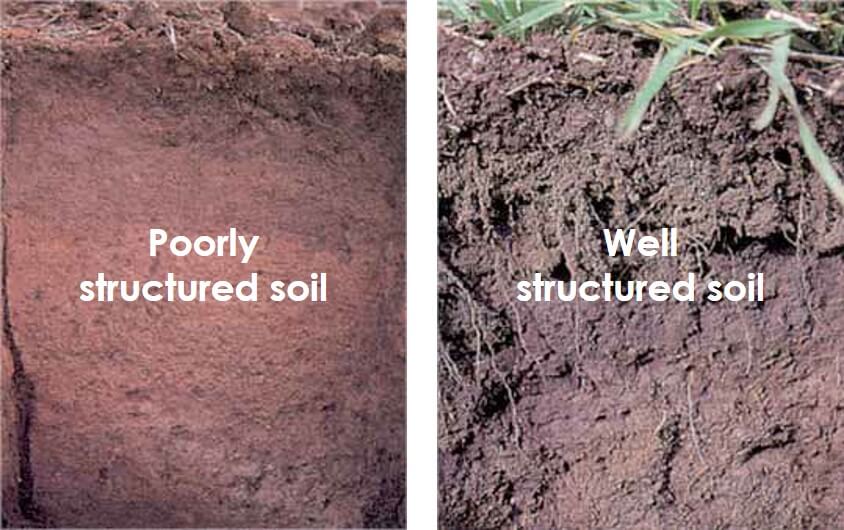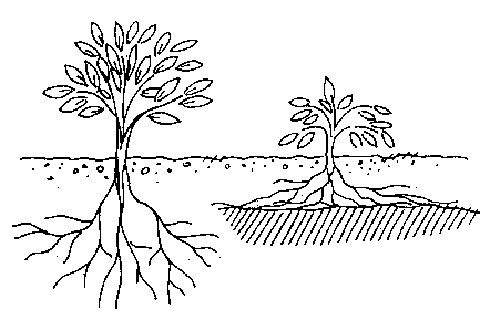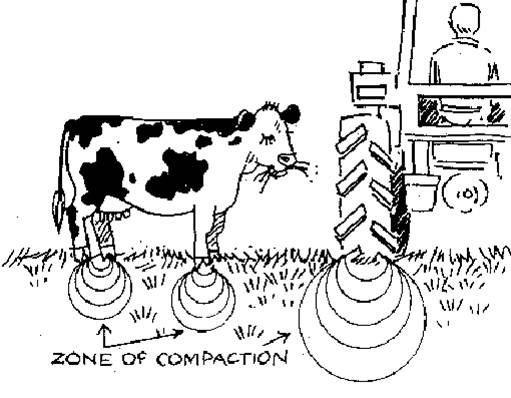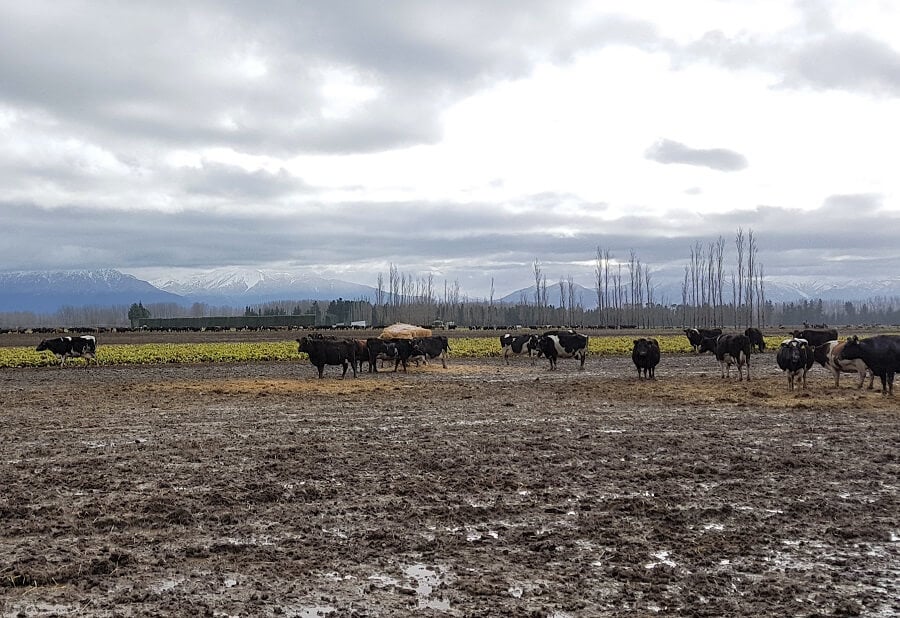Pugging and compaction damage is somewhat inevitable on a lot of farms throughout winter as muddy, water logged paddocks are trafficked by machinery and high concentrations of stock, often reducing a pastures production and in worse cases, churning the field into a waterlogged mud hole.
In the long term, damaged pastures can suffer reduced growth anywhere from 20% to 80% lower than normal if not treated or avoided, so given a dairy farms income is closely related to its ability to produce grass and fodder to feed its stock this is an issue that deserves some attention.
Avoidance is obviously most ideal, followed by minimizing the effects if pugging or compaction cannot be avoided, repair is obviously recommended if any form of pugging or compaction has occurred to bring the pastures back to optimum health and full production.
Effect of pugging on a farm:
- Pasture growth is reduced anywhere from 20% to 80%
- Nutrients leach from the soil
- Weeds and undesirable growth increases in the following growing season as pasture cover is decreased.
- Spring growth is delayed as waterlogged soils demand higher soil temperatures
- Uneven paddocks
- Stock health issues such as Toxaemia, Mastitis, Cracked teats, Lameness and Grass tetany
- Long term soil compaction issues that make paddocks prone to future pugging and water-logging due to the soils reduced ability to drain
Pugged and waterlogged paddocks are often obvious, as is the lower pasture cover or in some cases a total absence, what is often not seen or fully understood is the effects compaction & pugging have in the subsoils, such effects can include:
- Reduction in soil porosity, as the number of pores and size are reduced, this results in reduced water movement and lower aeration, leading onto waterlogged paddocks with lower pasture growth.
- Reduced root growth, compacted soil hampers root growth resulting in reduced root depth and reduced vigor. This leaves pastures less able to cope with climate and weather extremes due to less resilient shallow root structures.
- Reduced population of earthworms, ants, centipedes and other organisms as favorable conditions are no longer present.
 The pictures above show the difference between poor & well structured soil. The absence of root growth along with less permeable soil is evident in the poorly structured soil when compared to well structured soil.
The pictures above show the difference between poor & well structured soil. The absence of root growth along with less permeable soil is evident in the poorly structured soil when compared to well structured soil.

When subsoils are compacted roots do not grow as deep or vigorously, this in turn reduces the health & resilience of the plant as shown in the above diagram
Ways to avoid pugging and compaction occurring on your farm
Pugging and compaction is going to be near impossible to prevent, however measures can be taken to reduce the level to which pugging and compaction occurs in your pastures, some suggestions throughout the agricultural industry include:
- Do not graze in paddocks when pasture damage is likely, such times can be after rain or when paddocks are wet.
- Maintain good pasture cover, this acts as a ‘cushion’ on top of the soil when stock & machines travel across it.
- Use a temporary back fence so cows aren’t walking back over previously grazed areas. This peice of advice comes with a bit of a disclaimer though, as fencing stock into small areas can also cause pugging due to the high concentration! So ensure breaks are as square as possible rather than narrow strip grazing.
- When moving stock, walk them over pasture with greater growth.
- Move stock to a sacrifice area in the event of wet weather that may cause pugging, this limits the pugging to one area only and saves the majority of the paddock from pugging and compaction damage.
- Use an atv or utv to check stock instead of a Tractor, the lower ground pressure results in lower chance of compaction.
- When purchasing tractor tyres, make an effort to research the effect each option may have on pasture compaction. Some agricultural tyre manufactures have invested great amounts in R&D of recent years to help reduce the tractor ground pressure.
 Diagram showing immediate compaction zones of cattle & wheeled machinery.
Diagram showing immediate compaction zones of cattle & wheeled machinery.
How pugged and compacted pastures can be repaired
Repairing pugged and compacted pastures is easily done with a Subsoil Aerator that lifts the ground to disturb the soil structure, ensuring you have an aerator that reaches the lower portion of the soil is important to remove any pans or deep compaction that has occurred, not just surface pugging!
This makes the Subsoiler style of aerator most ideal, as it travels through the soil with points that lift the entire structure, ensuring both subsoil and surface compaction is removed, more information about subsoil aeration can be found here: Subsoil Aeration Benefits
Watch the video below to see the 'wave' the Subsoiler type of aerator makes as it travels through the soil, this 'wave' is the lifting effect that helps to disturb & improve the soil structure - removing compaction and pugging.
Rata's Panerazer makes the cleanest and fastest subsoil aeration job, check it out: Rata Panerazer


.webp)